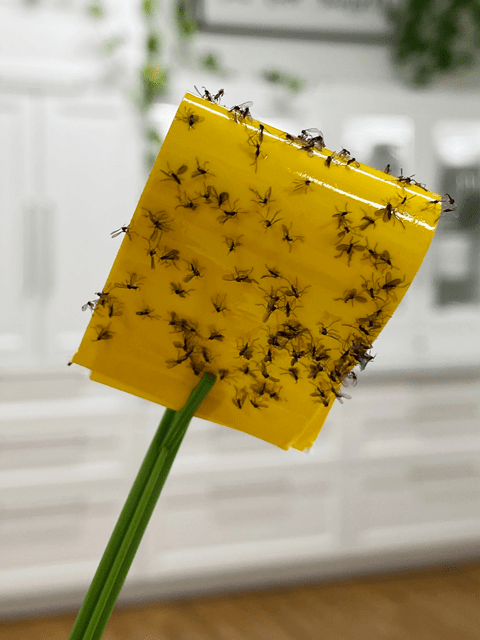

 Add to favorites
Add to favorites
The older kids are in school, the little one is down for a nap, and your spouse is off doing some errands. Ahhh, the house is finally quiet. What to do with yourself? You decide to make yourself an iced matcha latte, snuggle up on the couch, and read a book that has been begging for your attention over the past six months.
 You wiggle your toes under the blanket, feeling the warmth radiate from your body. You sneak a smile as you take a sip of your matcha latte. Life is good. You feel relaxed, peaceful, and impressed at the fact that you finally took time out for yourself.
You wiggle your toes under the blanket, feeling the warmth radiate from your body. You sneak a smile as you take a sip of your matcha latte. Life is good. You feel relaxed, peaceful, and impressed at the fact that you finally took time out for yourself.
The book you are holding is a real page-turner. In your mind, you have been transported to another world, and you don’t want to come back. Enter the gnat grenade. It starts by making you unconsciously waving your hand in front of yourself (pesky little thing), as you refuse to let your eyes leave the page. The gnat repeats its flight path a few more times, just enough to let you know that it has no plans to leave you alone.
You keep turning the pages; you have long forgotten about the six-legged, four-winged creature. Then…just as you hit that jaw-clenching moment in the book, the gnat flies up your nose, slams it into reverse, and flies back out. You frantically rub your nose to alleviate the deep tickle, the book slips off your lap and hits the floor with a thud! “What the heck was that?!”
Picking up the book and composing yourself, you strive to revisit that place of la-la-land. But that darn gnat! It feels like an army of them attacking you, swarming you, but it’s just one! You wonder, How is it that this ONE gnat is ruining my me-time!
As you attempt to read, once again, the itty-bitty black-winged creature from the land of torture decides to test your wits. If an innocent bystander were peering in on you, they would find you “happily” clapping your hands together, making what appear to be ’80s dance moves. They would witness you waving your hands in the air as if you were putting together a choreography routine.
To the outsider, you look actively happy, but little do they know…ONE single gnat is about to take you down! Fifteen minutes later and only one page into the book, you take the life of the gnat! Regaining your composure, snuggling deeper into the couch, you clench the book, hoping to lose yourself in the story. Two minutes later, the gnat reappears! NOOOO! As you are flapping your hands in the air, screaming profanities at this nano-sized creature…you hear the school bus dropping the older kids off, the baby starts crying, and your spouse bursts through the doors, spilling groceries all over the floor.
As you stare off into the distance, your heart sinks a tiny bit. You look down at the book, close it, and mutter the words, “The end.” That’s “the end” of your quiet time. Just then, a little gnat flutters around your face. You darn near do the hokey-pokey and turn yourself around and stomp off! Go ahead and giggle, but you know there is truth in the story. If you are a plant lover, you have experienced something similar.
It’s time to uncover just where the heck these guys are coming from. Eventually, you will trace their origin to a houseplant, as they hover around the base of your houseplant(s). Fortunately, although very common, they tend not to harm indoor plants and are more of a nuisance than anything. Today, I will share a few different ways to eradicate them. It’s that, or you have to quarantine yourself in a plant-less room and hope that one didn’t hitch a ride in your tailwind.
This insect is a common indoor pest that is typically found in or around overwatered potted plants. They are attracted to the moisture of potting soil. Adult gnats lay their eggs (up to about 200) on organic matter near the soil surface. After about three days, the eggs hatch into larvae, which burrow into the soil to feed on fungi and decaying plant material. Two weeks after that, adult gnats emerge from the soil to repeat the process. Adults live for about one week. Let the fun begin!
They are entirely harmless to humans (unless you want to keep your sanity intact) since they can’t bite and don’t spread diseases. They can be a problem for houseplants, however, when their population explodes, and their larvae start to feed on plants’ roots. Once you have a fungus gnat infestation, using consistent management and prevention techniques is key to ending it.
Well, to be frank, you know them when you see them. But, outside of invading your personal space, you can see telltale signs in your plants. If you have plants whose soil is infested with larvae, it will show symptoms of wilting, weak growth, and yellowing. The larvae can also cause severe damage to developing seedlings and young plants whose root systems haven’t fully developed.
They’re attracted to CO2 (carbon dioxide), which is why they fly right up in your face. Sure, they want to annoy the heck out of you, but in reality, they just want your CO2.
 How to Get Rid of Them
How to Get Rid of ThemThere are several initial steps that I consider mandatory. Outside of that, I will post a handful of possible remedies. You can try one or all and see what works best for you. Sometimes it will take several tactics, depending on the severity of the infestation.
Before trying any control measures, be sure that you have created a habit of keeping your plants free from debris, and you have the watering under control. Without those two steps in place, it won’t do any good to proceed with other measures. There are a lot of chemicals that you can purchase to help control a gnat infestation, but natural remedies are always my go-to. Remember, we need to treat the adult and larvae to get them under control.
Cinnamon – Controls larvae
Sand – Controls larvae
Potato slices – Controls larvae
Food Grade Diatomaceous Earth – Controls larvae & adults
Hydrogen Peroxide – Controls larvae
Vinegar Solution– Controls adults
Sticky Strip Traps
Assess the Soil You Are Using
Hi Amie Sue. I just discovered your website and blog through WallyGro, which I found through Jenny Kiker @livingpatterns. I love your writing style and am so appreciative of the information you’ve shared about houseplants. I haven’t even made it to your cooking info yet!
I’m a retired commercial interior designer turned freelance writer. I live in a 1957 brick ranch home that needs some plant love along with lots of other kinds. Thanks for sharing. I look forward to getting to know you.
XO
Dinah Rogers
Missouri
Good morning Dinah,
That is so awesome. It was such a pleasure fo WallyGro to share my post on their site. I appreciate all your of your encouraging words. Plants can surely transform a place and it sounds like you have lovely house-bones for that! Older homes do come with their challenges but the character they offer up is amazing, how fun. I hope you continue to enjoy the site and I too look forward in getting to know you as well. Have a blessed day, amie sue